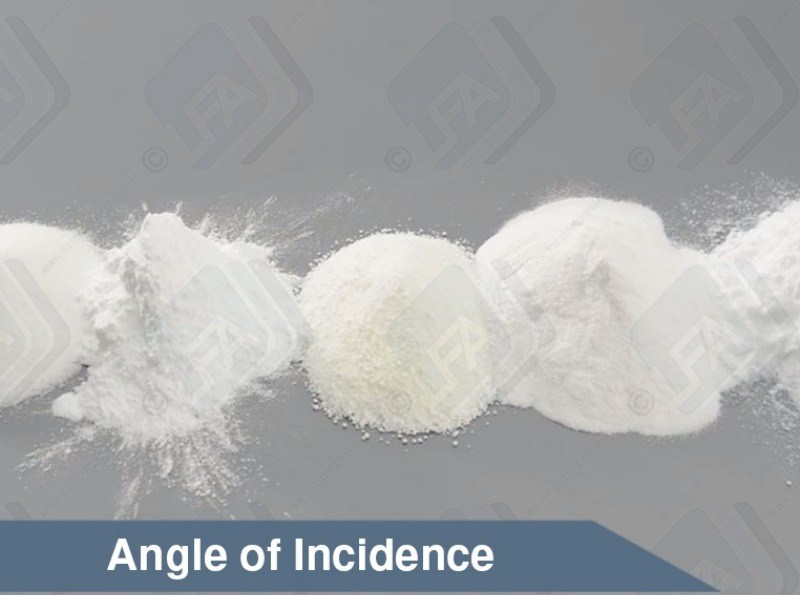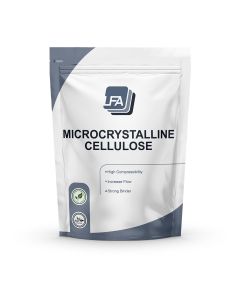Laktoza w proszku
Laktoza w proszku to produkt, który znają konsumenci. Posiada szerokie spektrum zastosowań. Poprawi smak, teksturę i kolor Twoich tabletek i ogólnie jest niereaktywna.
Laktozę w proszku klasy farmaceutycznej często wykorzystuje się w tabletkach. Cechuje ją niski poziom zanieczyszczeń. To węglowodan, co oznacza, że jest disacharydem. Znajduje się w grupie cukrów, które zawierają dwie pozostałości monosacharydów. Stanowi 2-8% wagi mleka. Jest rozpuszczalna i mało słodka. Laktoza w proszku jest przezroczysta, bez koloru i chemicznie obojętna. Może poprawić bezpieczeństwo produktu i ułatwia proces produkcyjny.
Czym jest laktoza w proszku
Laktoza to prosty węglowodan obecny w mleku. Występuje również pod nazwą cukier mleczny. To cukier redukujący, co oznacza, że w wysokiej temperaturze wchodzi w reakcję z aminokwasami. To może mieć decydujący wpływ na smak końcowy. Kiedy laktozę w proszku stosuje się w tabletkach, czyni się to metodą bezpośredniej kompresji. Zarówno laktoza suszona rozpyłowo, jak i bezwodnie, są w stanie uformować solidną tabletkę, gdy zostaną poddane kompresji. Klasa farmaceutyczna cechuje się drobnym proszkiem, jednak można ją stosować w połączeniu z innymi rodzajami laktozy w proszku. Mniejsze ziarenka ułatwiają mieszanie i sprawiają, że jest bardziej wydajne, zaś większe poprawiają przepływ. Laktozę w proszku można mieszać z sacharozą aby otrzymać mieszanki do pokrywania cukrem.
Możliwość tworzenia różnych stopni roztarcia laktozy ma wiele zalet. Każda klasa roztarcia to wyjątkowa forma laktozy w proszku. To oznacza, że możesz być bardziej dokładny w dobieraniu właściwości Twoich mieszanek. Każda z różnych klas ma różne metody produkcji. Laktoza klasy farmaceutycznej jest produkowana z dodatkiem serwatki, aby nasycić nią laktozę.
Podczas tworzenia tabletek należy wziąć pod uwagę wymagania klienta. Laktoza w proszku to powszechnie znany składnik o wielu właściwościach, o którym słyszało wielu potencjalnych klientów. Jedyna kwestia, na którą należy zwrócić uwagę, to uwrażliwienie na klienta, który nie może spożywać laktozy. Jej spożycie może wywoływać skurcze, biegunkę i wzdęcia.
Laktozę w proszku klasy farmaceutycznej należy przechowywać w zimnym, ciemnym miejscu. Temperatura nie powinna przekraczać 27 stopni Celsjusza, a wilgotność powietrza - 65%, ponieważ wysoka wilgotność może wywołać pleśnienie.
Laktoza w proszku jest:
- Na liście "GRAS" (Generally Recognised as Safe - ogólnie uznanych za bezpieczne)
- W bazie FDA Inactive Ingredients Database
- W preparatach jelitowych jak i pozajelitowych zarejestrowanych w Wielkiej Brytanii
- Na kanadyjskiej liście składników nie-medycznych dopuszczonych do stosowania
Laktoza w proszku to szeroko akceptowany składnik, uznawany za bezpieczny na całym świecie. Poprawi jakość i smak Twojego produktu, a Ty zyskasz składnik, który idealnie spełnia wiele zadań.
| Nazwa | Wartość |
|---|---|
| Numer CAS | 63-42-3 |
| Formuła molekularna | C12H22O11 |
| Forma | Biały proszek |
| Stan fizyczny | Stały |
| Przechowywanie | Przechowywać w temperaturze pokojowej |
| Temperatura wrzenia | 668,9 °C |
| Gęstość | 1,525 g/cm3 |
| Waga molekularna | 342,30 g/mol |
| Net Weight (kg) | 1.06 |
Yes, it does not matter what age, size or sex the person consuming the products is. It is, however, important to check the intolerance data.
Yes, all of the excipients are safe for human or animal consumption. There are some precautions that should be taken when handling them and there are some people that might have intolerances to some of them. Information on this can be found in the products MSDS and Intolerance Data Sheet. This can be found in this section for every excipient.
Yes, there are all of them can be found in the intolerance sheets for each product. The intolerance sheets can be found here: https://www.lfatabletpresses.com/product-data
FFFFFF Yes, we have bulk pricing for all of our excipients, and these can be found in this section. We offer bulk in 500 kg, 1 ton, 2 ton and 5 ton lots. The prices are set on these quantities as these are the amounts that will fit on pallets.
Yes. CoA stands for Certificate of Analysis this is also known some times as an MSDS (Material Safety Data Sheet) all of the information contained in a CoA is inside the MSDS for every LFA product which is emailed to you after purchase.
Yes. There are two things at play here. You can get hygroscopic and hydrophobic excipients. Hygroscopic means that they take on water quickly, while hydrophobic means that they repel water.
There are products know as supper disintegrants. These products help the breakdown of tablets. At the moment LFA does not sell any supper disintegrants.
Magnesium stearate is hydrophobic this means that it will slow the breakdown of a tablet.
However, it is used in such small amounts that most of the time it will not make a difference to our customer's products. If they would like to be sure then they should conduct what is known as a disintegration test.
Firmapress - 2 years form batch date.
Dextrose - 3 years from batch date.
Dicalcium Phosphate - 3 years from batch date.
Microcrystalline Cellulose -
Magnesium stearate -
Lactose - 2 years from batch date.
Silica Dioxide - 2 years from batch date.
here are 6 steps that should be followed as a general rule of thumb when cleaning contact surfaces that have come into contact with powders:
Dry Clean - First you need to remove as much of the dry powder as possible. You can do this using a hover/vacuum. Make sure that the vacuum you are using has a filter good enough to handle fine dust.
Wet Clean - Next you need to perform a wet clean. This can be done with warm water and soap or if available an ultrasonic cleaner.
Rinse - Next you need to rinse off any soap with potable water (drinking water). You do not have to do this if you used an ultrasonic cleaner in the last step. It is important to ensure that all parts are thoroughly dried immediately after washing to avoid any rusting.
Sanitise - Next you need to sanitise the surface. This step is recommended by the FDA. There are a number of sanitising solutions available designed to be applied and left on.
Lubricate - You now need to lubricate any parts that require it. This should be with the appropriate grade oil or grease considering your use and greasing chart. Store - Finally store any of the parts in a cool dry place. If you are storing them on the machine then make sure the machine is in a temperature controlled environment with low humidity.
Dextrose - approx 100 mesh
Dicalcium Phosphate - approx 100 mesh
Microcrystoline Cellulose - approx 120-200
Magnesium sterate -
Lactose - 80 mesh
Silica Dioxide -
Firmapress - 100-200 mesh
Dextrose - Sweetener, binding agent, good for chewable tablets or candy.
Microcrystalline Cellulose - Binder, filling agent. Good at binding tablets and making them bigger. It can also be used as a filler for capsules.
Magnesium stearate - Dry Lubricant. This stops products from getting stuck to the tooling. It can also help with powder flow issues and caking issues.
Lactose - Binder, sweetener and bulking agent. It has a large mesh so it flows well but most people do not like it because of the intolerance issues.
Silica Dioxide - Flowing agent. This assist powders in flowing smoothly through the machines. It also helps with cacking issues where powders get stuck to the machine.
Firmapress - 2 years form batch date.
Dextrose - 3 years from batch date.
Dicalcium Phosphate - 3 years from batch date.
Microcrystalline Cellulose -
Magnesium stearate -
Lactose - 2 years from batch date.
Silica Dioxide - 2 years from batch date.
If your product does not bind well then we would recommend using MCC. This can be used in any % the limiting factor is the size of the tablet.
If the amount of MCC you would have to use would be too much or if you do not want to use MCC then you have 3 other options: Ask your supplier for a directly compressible or tabletable grade of your product. Spray dry your product. Wet granulate your product.
If your product is sticky then you will need to add a dry lubricant to your mix. For this, we recommend magnesium stearate.
We do not recommend that you add more than 1% to the mix as more than this can cause capping. If your product is still sticky at this point then we would recommend looking into granulation.
If your product or API is clumpy then you will need to add an anticaking agent. For this, we recommend silicon dioxide. We only recommend adding a maximum of 2% of this to the mix









